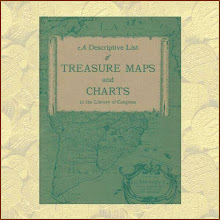 The Crab Nebula - a supernova explosion 6,000 light years away.
The Crab Nebula - a supernova explosion 6,000 light years away.Photo Credit: Cassini telescope/ NASA
When I want to find out what's happening in space I usually turn to Space.com or NASA's official site for information. Images are often available in galleries that can be downloaded for your personal use. I am offering a few images here taken from the Space website. I'll offer descriptions below each image.
What is a Nebula?
Let's explore that question.
 The Bulge - NGC 3627 , also known as Messier 66, is about 35 million light years away. Also known as the constellation Leo (the Lion). Photo and information credit: NASA
The Bulge - NGC 3627 , also known as Messier 66, is about 35 million light years away. Also known as the constellation Leo (the Lion). Photo and information credit: NASA
Let's explore that question.
According to Wikipedia, a nebula is an interstellar cloud of dust. This dust is comprised of the gas hydrogen and plasma. Nebulae often are the source of star forming regions, such as the "Eagle Nebula", also called the "Pillars of Creation".
What impresses me most is the imagery of these dust clouds and stardust and planetary fragments or bodies occupying space. It is a wonder of creation in my mind. Look at these images of nebulae. Incredible, aren't they? I mean, they are like nothing you would see on earth. Yet, some of them resemble mountain formations found here on earth. I'm addressing the magical side of space, not the scientific.
The Eagle Nebula reminds me of three peaks jutting from a high mountain top. These formations also resemble three beings standing as guards out there in the great spanse of eternity. In three sizes, they remind me of a Father, a Mother, and a Child. Look for yourself!
I apologize for the lack of technical information here, but I thought you would appreciate the spiritual and mysterious side of the universe. I promise that we'll delve into some space detail in some upcoming posts. Enjoy the newest images from the Cassini telescope and watch for news on comets, asteroids, magnetic storms and planetary alignments.

Eagle Nebula /Photo credit: NASAWhat impresses me most is the imagery of these dust clouds and stardust and planetary fragments or bodies occupying space. It is a wonder of creation in my mind. Look at these images of nebulae. Incredible, aren't they? I mean, they are like nothing you would see on earth. Yet, some of them resemble mountain formations found here on earth. I'm addressing the magical side of space, not the scientific.
The Eagle Nebula reminds me of three peaks jutting from a high mountain top. These formations also resemble three beings standing as guards out there in the great spanse of eternity. In three sizes, they remind me of a Father, a Mother, and a Child. Look for yourself!
I apologize for the lack of technical information here, but I thought you would appreciate the spiritual and mysterious side of the universe. I promise that we'll delve into some space detail in some upcoming posts. Enjoy the newest images from the Cassini telescope and watch for news on comets, asteroids, magnetic storms and planetary alignments.

 The Bulge - NGC 3627 , also known as Messier 66, is about 35 million light years away. Also known as the constellation Leo (the Lion). Photo and information credit: NASA
The Bulge - NGC 3627 , also known as Messier 66, is about 35 million light years away. Also known as the constellation Leo (the Lion). Photo and information credit: NASAI found another informative website for your future browsing. Check out http://www.spacetoday.org.
The constellation Leo is one of my favorites. What do you know about the constellations?
The constellation Leo is one of my favorites. What do you know about the constellations?













No comments:
Post a Comment